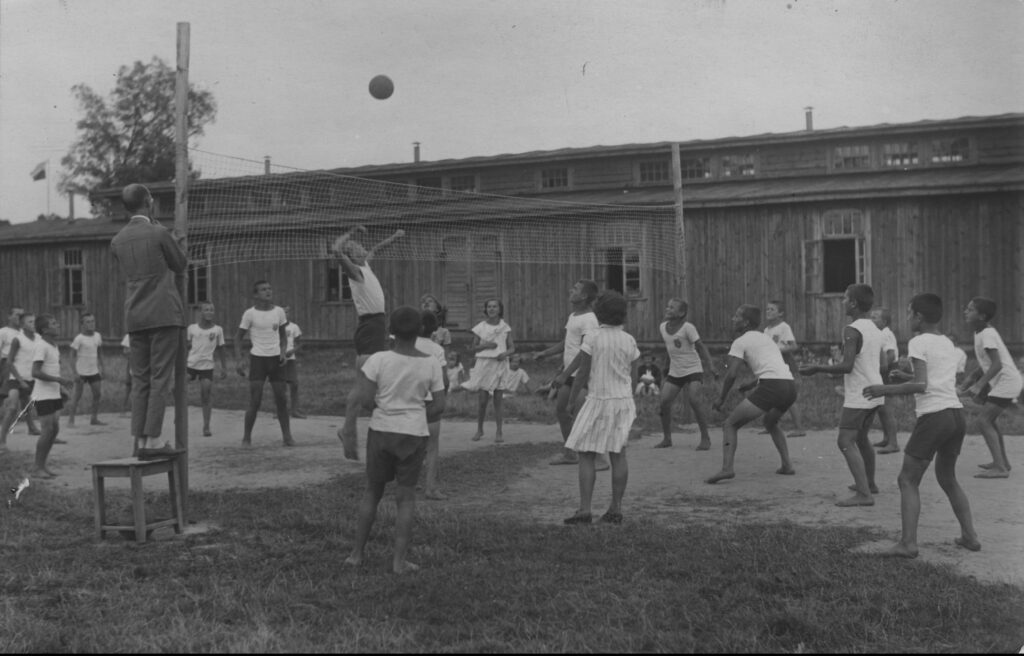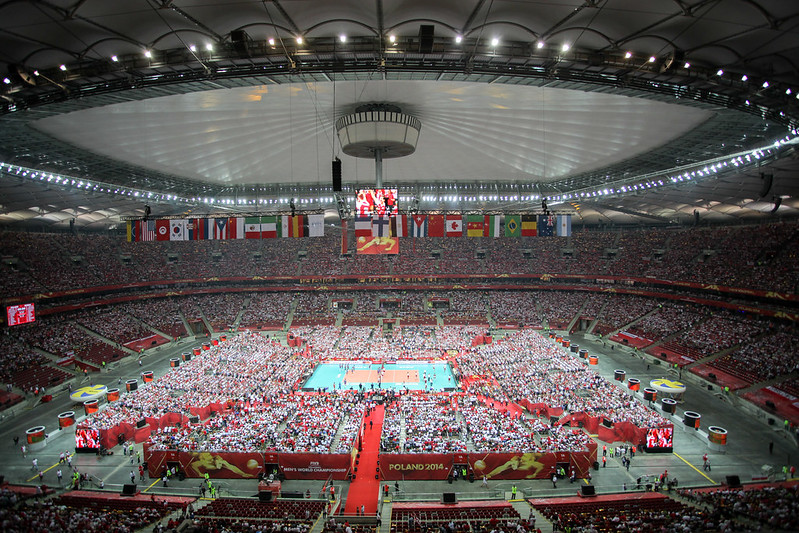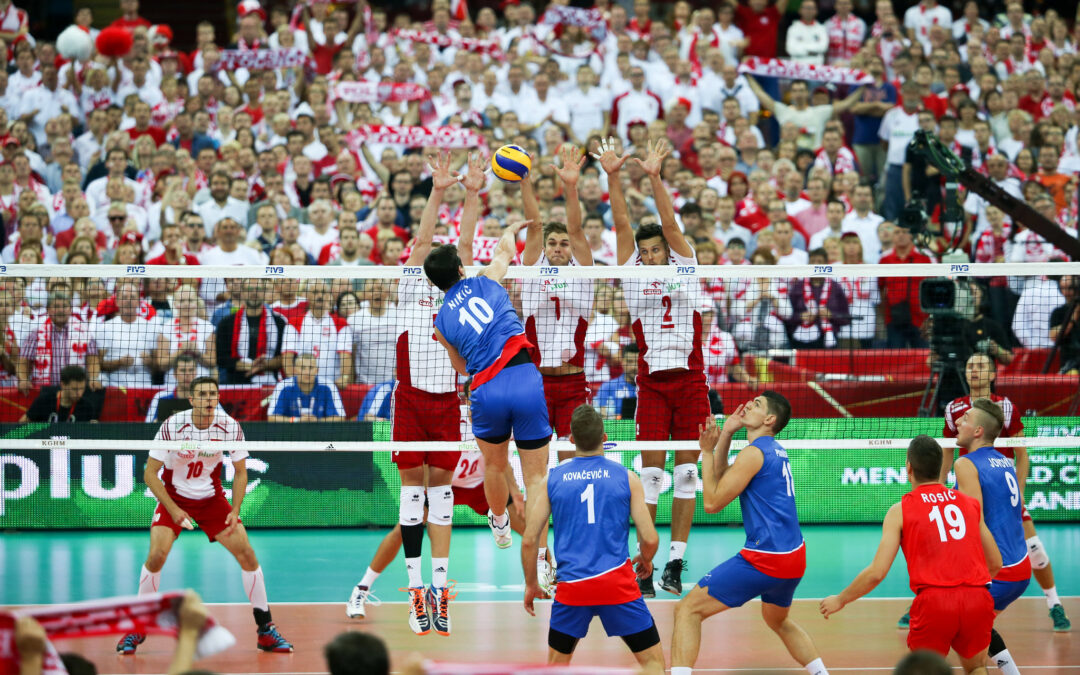By Krzysztof Sędzicki
As Poland today begins co-hosting the men’s volleyball world championships – and with the women’s event to follow in September – “volleymania” is set to take over again.
Like ski jumping and speedway, volleyball is one of those sports that are popular in relatively few countries but in which Poland excels – with its men’s team currently ranked first in the world.
The country is also renowned for its passionate but welcoming fans, who this summer and autumn will flock to the country’s indoor arenas and sit down in front of TV screens in the hope of further success.
IT ALL BEGINS TOMORROW 🤯!
The 2022 Men's Volleyball World Championship BEGINS TOMORROW FRIDAY August 26 until September 11 in Poland 🇵🇱 & Slovenia 🇸🇮.
📺 Watch the matches on VBTV.
➡️ World Champs schedule: https://t.co/IBT5y8vmcc
🏐 #Electrifying2022 #Volleyball #MWCH2022 pic.twitter.com/kM1P4gbyvB
— Volleyball World (@volleyballworld) August 25, 2022
What made Poland into a “volleyland”? In recent years, the success of the men’s team in world and European championships and the Nations League – although not the Olympics, where Poland struggles to overcome the “quarter-final curse” – has certainly fuelled the obsession.
But volleyball is also a popular pastime at grassroots level up and down the country, and one of the sports of which children learn the basics from an early age.

Children playing volleyball at a summer camp, 1927 (photo: public domain)
The first shoots of success in the 70s and 90s
In the 1970s, at the same time when the Polish national football team was beating the world’s best, their volleyballing colleagues were also coming to prominence.
Hubert Jerzy Wagner’s team first triumphed at the world championships in Mexico in 1974, and two years later won Poland’s first (and so far only) Olympic gold after a dramatic battle with the Soviet Union. The top players of the era – Edward Skorek, Tomasz Wójtowicz, Ryszard Bosek and Zbigniew Zarzycki – are fondly remembered to this day.
But the first real volleyball boom in Poland did not come until the end of the century, when the International Volleyball Federation (FIVB) invited the men’s team to play in the World League.
Now known as the Nations League and usually played in early summer as the curtain-raiser to the so-called international season, this tournament offers a healthy financial injection (a million dollars for the winner). It also gives world ranking points, which can later translate into a better seeding for championship qualifications.
The Polish men debuted in the World League in 1998. Although they won only three of 12 matches, thousands of fans crammed into the stands to watch. The support was like nothing seen before – with music specially selected to create a joyful family atmosphere in the stands.
Popular songs such as “Polska Biało-Czerwoni” (Poland, white and red) and “W górę serca Polska wygra mecz” (Lift your hearts, Poland will win) were played at the matches and caught on, and today it is hard to imagine a match without their accompaniment.
Volleyball became a refreshing change from football, which in the 1990s was plagued by corruption and hooliganism at stadiums. It turned out that it was possible to support the national team without using coarse language, tearing out seats and demolishing stadiums.
The golden girls arrive
Yet while volleyball was now popular in Poland, success in the international arena was proving elusive. There is a limit to how long you can reminisce about Płomień Milowice’s victory in the European Champions Cup in 1978 or the national team’s feats of ’74 and ’76. Eventually, a new golden era began from an unexpected source, as the unfancied women’s national team defied the odds to win the European championship in 2003 in Ankara and again in Italy two years later.
The “Złotka”, or Golden Girls, as the team became known after their first title, were coached by the late Andrzej Niemczyk – a colourful figure who loved volleyball, gambling, women and whisky.
“If a man marries volleyball, then children or women are secondary,” he once said in an interview with Gazeta Wyborcza. “I know that shouldn’t be the case, but it was for me. I divorced three women, but not volleyball. Many people didn’t use as much water to bathe in as I drank whisky. But did anyone ever see me drunk?”
The “golden” team featured talented young players such as Małgorzata Glinka and Katarzyna Skowrońska, who went on to be big stars in the Italian league, regarded as the best in the world.
After the women’s success it was the men’s turn. In 2006, led by Argentine coach Raúl Lozano, the Polish team took world championship silver in Japan. A historic turning point came in the match with Russia, when the Poles overcame a two-set deficit to qualify for the semi-final (a match, incidentally, that the author of this article has no regrets about skipping class for).
Only in the final did Poland meet their match in the form of Brazil – a country where volleyball is also huge – and the Canarinhos would prove to be a tough opponent for years to come.
A further milestone came in 2009, when the men’s team became European champions for the first time, while the Polish women took bronze at their home tournament. For men’s volleyball, this was only the start of greater things to come, while for their female counterparts, unfortunately, it marked the end of the golden era.
Packed-out arenas decked in white and red
Fans responded to the national teams’ successes by packing out the largest arenas in the country, in Łódź, Gdańsk, and the Spodek in Katowice – the “flying saucer” known as the “mecca of Polish volleyball”. It was here that the highest-octane atmosphere was reached – “the flying saucer took off”, as the saying went.
Hymn Polski>>>>>>>>>>>>>>>>>>>>>Spodek odleciał pic.twitter.com/qfba8MGzJv
— Albert Rychard Official ® (@Albert301271) March 2, 2018
Success was replicated in club tournaments. PGE Skra Bełchatów finished third in the Champions League in 2008 and 2010 and second in 2012, although they might have done even better if the referees had not incorrectly awarded a point against them at a crucial moment despite replays on TV and the big screen. The controversy was a contributing factor to the video challenge system that came into play a few years later.
The national team won its first World League medals in 2011 and 2012, with bronze in Gdańsk followed by gold in Sofia. The latter success tasted slightly less sweet after defeat in the Olympic quarter-final in London, but remains the only victory of a Polish team in the tournament.
Let them watch volleyball
The world championships of 2014 marked a new explosion of interest in volleyball in Poland, with a media frenzy well before the first ball was served. The opening match was played at the National Stadium in Warsaw before a crowd of over 60,000 fans.
For the first time, the tournament was pay-per-view on Polsat, with only the first match initially made available for free. This decision, the result of the withdrawal of a sponsor before the tournament, was criticised from all sides.

Poland take on Serbia in the opening match of the 2014 world championship at the National Stadium in Warsaw (photo: Flickr/Mariusz Cieszewski, Ministry of Foreign Affairs (under CC BY-NC 2.0))
Only following the intervention of then President Bronisław Komorowski did the TV station’s chief Marian Kmita agree for the final to be screened on a free channel. This time Poland beat Brazil 3:1, and after 40 years were again world champions.
They defended the title four years later at a tournament co-hosted by Italy and Bulgaria. As the Polish team’s stock rose, tickets became highly sought after, rivalling the national football team – who have found success harder to come by in recent years – for popularity.
2018 FIVB WORLD CHAMPIONS: POLAND. Four years later, Michal Kubiak & Poland remain as the VOLLEYBALL KINGS OF THE WORLD! Congratulations! Gratulacje! Stay tuned for more updates. 🇵🇱🇵🇱🏐🇵🇱🇵🇱🏆🇵🇱🇵🇱🥇 pic.twitter.com/y2R0z3fJmT
— Volleywood (@Volleyw00d) September 30, 2018
Top-class sport, organisation and fans
The excellent atmosphere at matches taking place in the country makes Poland a popular venue for FIVB tournaments. Apart from 2014, Poland also hosted or co-hosted the European championships in 2013, 2017 and 2021.
This year’s men’s world championships were meant to take place in Russia, but Poland, along with Slovenia, stepped in when the sport’s governing body decided to strip the Russians of the honour after the invasion of Ukraine. Poland will also co-host the women’s tournament, with the Netherlands, the following month.
Poland and Slovenia will host this year men's volleyball world championship after Russia was stripped of the event, says the Polish PM https://t.co/MA2SC7PM3R
— Notes from Poland 🇵🇱 (@notesfrompoland) April 14, 2022
The enthusiasm of fans and professional approach encountered in Poland have been a key factor in many other events being held in the country. International players who have come to Poland say it is a place that lives and breathes volleyball. Their own countries, such as the United States, France and Serbia, are among the world’s best, but the sport is less popular than others, and its stars do not feature on the front pages of newspapers. In Poland it is a different story.
Nikola Grbić, the Serbian coach of the Polish national team, remembers the atmosphere at national team matches in Poland well from his playing career. “When I was in the Serbian national team, I noticed how many people come to matches [in Poland], what goes on around them and how involved they are in the match,” he told Przegląd Sportowy.
Drodzy Kibice – reprezentacja Polski na Mistrzostwa Świata 2022 🔥#MŚ2022M pic.twitter.com/EW3dIMJfN3
— POLSKA SIATKÓWKA (@PolskaSiatkowka) August 24, 2022
So strong is Poland as a volleyball nation that many coaches, observers and fans say that if only teams consisted of 18 or 24 players, gold medals would always be assured. But as there are only six players on court at a time including the libero, the Poles regularly face teams that can compete and even beat them.
Nowadays, many of the top international players – including Americans, Serbs and Slovenians – learnt their trade in Poland’s PlusLiga, which rivals the Italian and (until recently) Russian leagues for its ability to attract stars of the game. In 2021, ZAKSA Kędzierzyn-Koźle became the first ever Polish winner of the CEV Champions League, and this year the club successfully defended its title.
It is not just financial concerns, but the country’s ongoing love affair with volleyball that makes them want to come. In sporting as well as organisational terms, no other country compares to Poland the volleyland.
Translated by Ben Koschalka. Main image credit: Flickr/Mariusz Cieszewski/Ministry of Foreign Affairs (under CC BY-NC 2.0)




















